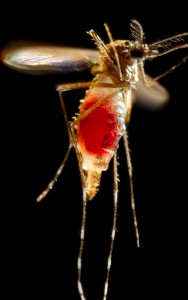
BPA found in linings of canned foods
A new report released March 30 finds Bisphenol A (BPA) in the linings of two-thirds of America’s canned foods. Nearly 200 cans from distributors like Campbells, Kroger and Del Monte were tested from 19 different states for the chemical. BPA is a chemical known to have health risks. As an endocrine disruptor, BPA interferes with hormone processes, making children and pregnant women the most at-risk. Some possible health effects from the chemical are reproductive disorders, heart disease and type 2 diabetes.
The report, published by six nonprofit organizations, including the Breast Cancer Fund and the Ecology Center, finds that 67 percent of cans tested contain BPA, despite FDA support to remove the chemical from food packaging since 2010.
The study also raises worry over what some companies are replacing BPA with, meaning the “BPA free” labeling doesn’t necessarily give you a safer can.
“Our investigation raises the concern that retailers and brands could be replacing BPA-based epoxy with regrettable substitutes,” the study states.
One such substitute is a PVC-based copolymer, found in 36 percent of national brands. This raised an issue, as PVC is made of vinyl chloride, which is a known carcinogen.
The food industry has been continuously urged to move away from BPA since initial bans of the chemical in baby products in 2008, but has made little progress.
Risk of Zika outbreaks grow with summer heat

As summer draws near and temperatures rise, many major cities across the U.S. are increasingly at risk for Zika virus outbreaks. By combining factors of temperature, population, travel and poverty, a study led by the National Center for Atmospheric Research’s (NCAR) mosquito and disease experts estimate potential outbreaks for 50 U.S. cities.
As winter conditions are too cold for the Aedes aegypti mosquito in most of the U.S. besides parts of southern Florida and Texas, its range grows in spring and fall. By studying this specific mosquito, which has been spreading the virus throughout South America in the last year, researchers have determined it will likely migrate up the East Coast to New York City and across the southern U.S. over to Los Angeles in the coming months. Denver and the rest of Colorado face small risk thanks to a dry climate.
Cities that have potentially abundant populations of the mosquito, travelers from South America and larger populations under the poverty line are the most at-risk, which include Miami, Orlando and Houston. However, the researchers assert the virus is unlikely to spread as fast as it has in South America, given that the vast majority of Americans live and work in sealed buildings with air-conditioning.
There is no vaccine for Zika, so the most one can do is prevent transmission. The virus can be transmitted from mosquito bites, sexual contact, blood transfusion or from mother to child. To prevent the possible spread of the virus, the Centers for Disease Control and Prevention suggest usual mosquito bite prevention including wearing insect repellent, long sleeves and wearing clothing treated with permethrin, a popular insect repellent.














